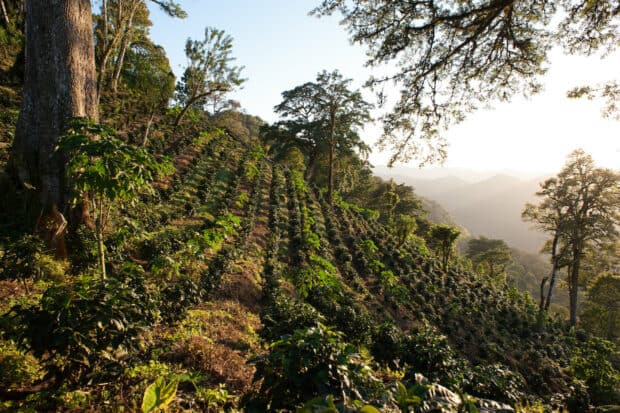[[{“value”:”
“Sunshine on coffee” by skinnydiver is licensed under CC BY-SA 2.0.
Total coffee production in Nicaragua is expected to rebound to historically near-average levels in 2024/25 thanks largely to more cooperative weather.
However, overall production and trade remained hampered by unprecedented outbound migration and labor shortages, increased fees and costs of inputs, and lack of access to credit, among other factors.
These and other issues are outlined in the new USDA Foreign Agriculture Service annual report on the Nicaragua coffee sector.
[Note: This is part of a series of stories that will explore USDA FAS annual coffee reports. The information agency typically delivers more than a dozen country-level reports on the coffee sector, each coming from different authors and field offices, with predictions for the 2024/25 market year.]
Production
The FAS post in Managua estimates that 2024/25 coffee production will rebound to 2.6 million 60-kilogram bags, driven by improved weather conditions and access to higher-yielding varieties.
“Unprecedented levels” of outbound migration has significantly reduced labor availability, increasing costs and affecting yields, while reduced access to affordable financing poses a threat to small coffee growers’ productivity and investment in the sector, according to the report.
Despite numerous production challenges, the coffee sector has been boosted by the increased presence of higher-yielding coffee varieties like Marsellesa, Parainema, Costa Rica 95, IH Cafe 90, Lempira, and others, while ongoing projects by World Coffee Research, USAID and others have increased nursery stocks.
Crop Area
The 2024/25 coffee crop area in Nicaragua is projected to remain unchanged at 143,000 hectares planted and 141,000 hectares harvested.
Since the 2013/14 coffee leaf rust outbreak, approximately 20,000 hectares of arabica coffee have been replanted — which is short of an ideal target, according to the analysis — while credit access and availability of rust-resistant varieties remain challenges for farmers.
The most recent agricultural census, which is now 13 years old, shows that 71% of Nicaraguan coffee farms are under 15 hectares, producing 37% of the total coffee volume, while medium-sized farms (15-70 hectares) produce 27%, and large farms (over 70 hectares) produce 36%.
Policy
Enacted in 2013, Law 853 is designed to fund the renovation of aging coffee farms by levying a fee on every exported bag. The fund has raised more than US$40 million since its inception, although its effectiveness in renovating the sector is a matter of debate among farmers, according to the analysis.
Law 368 was enacted in December 2000 to provide tax exonerations for coffee growers. However, newer legislation, published in 2019, imposed import duties of up to 30% on fertilizers and agrochemicals, negatively impacting growers’ profitability and access to essential inputs, according to the FAS analysis.
The government’s policies continue to be focused largely on funding farm renovation and providing strategic tax breaks.
Domestic Consumption
2024/25 per capita coffee consumption in Nicaragua is estimated to remain flat at approximately 1.5 kilograms per per capita.
There’s growing demand for high-quality specialty coffee, especially among younger consumers, with an increase in coffee shops offering diverse coffee drinks in larger cities.
High outbound migration, rising costs of basic commodities and other economic challenges are expected to prevent significant increases in overall coffee consumption, according to the report.
Trade
Nicaraguan coffee exports are projected to reach 2.2 million bags in 2024/25, an approximately 200,000-bag decline from the 2022/23 year.
The United States continues to be the leading market for Nicaraguan green coffee, accounting for about 50% of exports, followed by the European Union. Both those markets are the dominant destinations for higher-quality and certified arabica exports, according to the analysis.
Exports are expected to decrease by 10% in the current market year (2023/24), due to a smaller crop and higher projected global coffee inventories, according to a March analysis from Rabobank.
Comments? Questions? News to share? Contact DCN’s editors here.
Related Posts
“}]]


